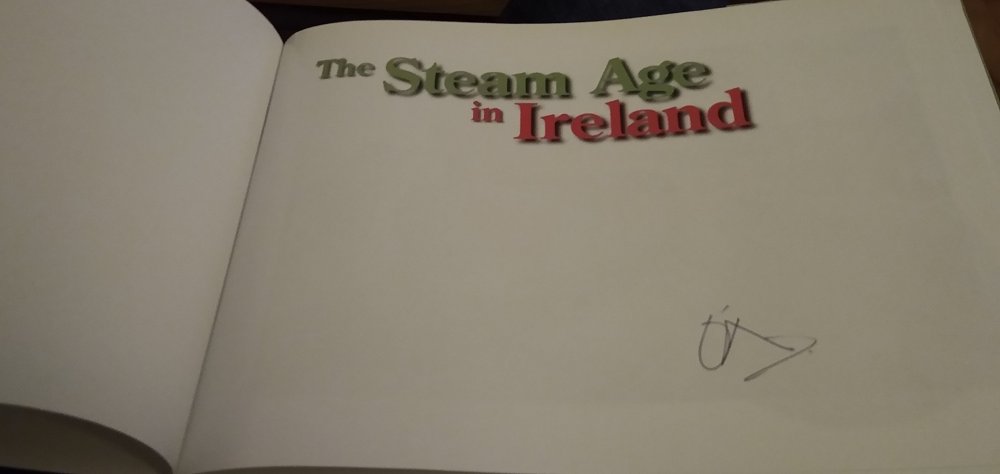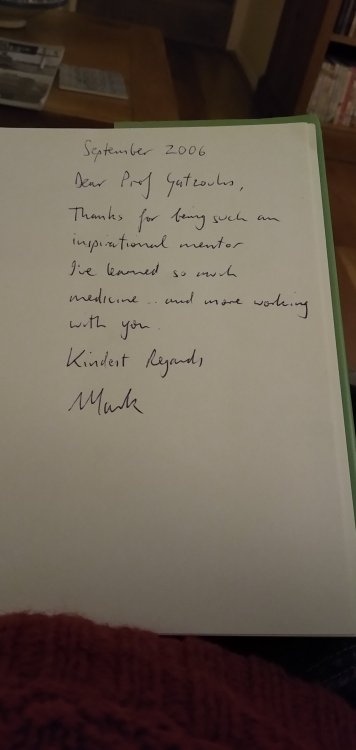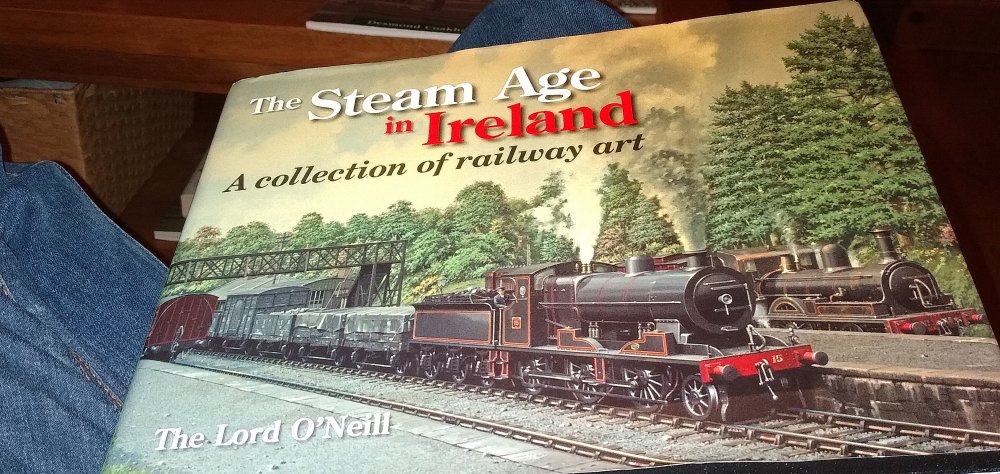
David Holman
Members-
Posts
4,338 -
Joined
-
Last visited
-
Days Won
117
Content Type
Profiles
Forums
Events
Gallery
Blogs
Store
Community Map
Everything posted by David Holman
-
Fun is what the hobby is all about. Well, mostly!
-
A lesson in perseverance, skill and vision. So, what's next? Moving it on, with some of the stock suggests a change of scale or direction maybe?
-
Name dropping of a grand order. Not that I'm in any way jealous, you understand... Exhibiting does enable you to meet some talented and lovely people though, including some very familiar names. We didn't always talk model making either, they are all very interesting as people too.
-
The little film is great fun and the loco runs well too. Did I detect a bit of gear whine? If so, is the 'box well oiled? That, along with more running in, usually cures it.
-
Thought the first series was just about ok, until the final, which was way more about people than modelling. This series has little to do with model railways, just a lot of naff effects added to a train set. Calling an Airfix model plane going by stuck to a stick was NOT 'great engineering'! At the end of the day, it is Bake Off, with trains, though talking to Andrew Burnham, there has been a big upsurge in interest, so for no other reason the show has been a success. Next step should be 'Celebrity Model Railway Challenge'(!). Rod Stewart v Pete Waterman v Jools Holland? Somehow doubt it, but am sure there are 'celebrities' out there who we've never heard of who would certainly play trains for a fee...
-
Very nice. There was an article years ago about how to 'tinker with Linka...'
-
Another thought - is scribing really necessary? Even in 7mm scale, it is arguable that brickwork is best represented by printed, rather than embossed, paper, let alone scribing DAS clay. If mortar lines are around 2mm deep, then when reduced by 1/43rd, that equates to around 0.05mm, so in 2mmFS, that will be barely 0.01mm, or 10 microns! However, it is also arguable that sometimes we need to exaggerate certain features, in order to make them appear more realistic - artistic licence, as it were. Overall though, for quite a few aspects, across the scales, it is worth considering whether they are better represented by a printed sheet, rather than scribing lots of fine lines - it can save quite a bit of time and still look just as effective from the normal viewing distance of 60-100cm away. Having said all that, I will still be scribing stones and bricks when I build my new coal stage, but there are times when I find myself thinking 'do I really need to go to all that trouble, or is there a quicker, simpler way?'
-
That will learn you - scribing stones in 2mm scale... Taking shape nicely!
-
Fintonagh got 'best layout' in show today, which was nice, especially as the prize was two bottles of wine! Good to know Eurotunnel was working properly. Am afraid it is usually British Customs who make it slow.
-
Has all the makings of a fine cameo, not least because the photos make it look much bigger than it really is. It also has real atmosphere, because the track and buildings say Ireland, even without the stock. Nice one!
-
Great to meet you at Broadstairs show today!
-
Guessed it might be a la Gravett. Few do it as well, so well worth emulating. And very nicely it has turned out too. So many of these die casts are really good models hiding beneath a layer of bling, so a bit of work like this brings them to life. Can't see from the photos if you've done the 'filing a flat on the tyres' trick yet, but of all Gordon's tips, that is the simplest and really makes the model 'sit' as per prototype. The building is not bad either...!
-
Whether to Weather or Preserve Pristine - Quite the Quandary!
David Holman replied to DJ Dangerous's topic in General Chat
Personally, I don't understand the idea of buying something, simply in order to keep it pristine, in its box even, simply to protect future resale. For me it is all about enjoying your hard earned and if it is something designed to run, then use it as intended. However, one of the great things about our hobby is that, if it works for you, then it is right, so do your own thing and enjoy it. -
Thanks folks. There is a clear facsimile of the Lord's signature elsewhere in the book, so nice to have stumbled across a signed copy. Many superb paintings too!
-
Thanks to Mayner of this parish, for telling me about 'The Steam Age in Ireland', by The Lord O'Neill no less. Several copies on Amazon and ordered the cheapest at just £15 - half the original. Arrived today, in very good condition and on opening it, found not one, but two signatures inside. Found myself wondering who they might belong to and given the extraordinary knowledge displayed on this forum, thought it might be worth a punt. The longer caption reads something like, 'Dear Prof Gatcoulis (?). Thanks for being such an inspirational mentor. I've learned so much medicine and more working with you. Dated September 2006. The book is an absolute treat by the way.
-
Not many Irish termini did without turntables, though Westport Quay and Valencia are two. JB doesn't need me to tell him this however! Anyone following my own turntable adventures will know they are neither cheap nor easy, but once they are available again the Kitwood Models versions seem well worth a look. Decent website too.
-
Somebody's been busy with a static grass machine, methinks. Love those things. Looking good!
-
MGW 'fortress' coaling stages
David Holman replied to David Holman's question in Questions & Answers
Very much confirms Mayner's drawing, with important details around both the doors and the brick built corners. Looks like bevelled capping stones too. I continue to be amazed at what this forum can find. Many thanks everyone! -
Certainly looks good in the photo, while at normal viewing distances, can't see the hat one needs any more.
-
Possibly, though expanding the be photo shows the downpipe from the roof gutters stopping short of the porch which suggests there was a gulley next to the wall on the porch roof and water from here went down the next drainpipe to the ground. A slight gradient on the porch roof towards the wall?
-
MGW 'fortress' coaling stages
David Holman replied to David Holman's question in Questions & Answers
Wonderful! A project can now begin! Many, many thanks. -
MGW 'fortress' coaling stages
David Holman replied to David Holman's question in Questions & Answers
Thanks JB, if anything one has the answer, I guess d it might be you! Got to Clifton a few years ago, but never thought to look for the coal store. -
Don't know if this is the right title, but I mean the ones with a high wall around all four sides. Presumably, there were strong, wooden doors at the entrance, but how did they open - hinged/sliding and were they the usual green painted colour? The one at Achill looks quite a narrow gap, which can't have made coaling very easy. Did they used baskets, as on previous pictures, or was it just blokes with shovels? I have Ernie Shepherd's book on the MGW, but this far haven't been able to find anything useful, while Google is a complete blank.
-
Fine diorama, great presentation. What's not to like?
-
A thought just triggered and hey presto, p130 of a Rails to Achill, with an eight foot high wall around the coal stage. Could be tempting and certainly a bit different.
.png.c363cdf5c3fb7955cd92a55eb6dbbae0.png)




